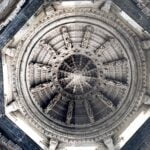Get ready to embark on a fascinating journey through time as we unravel the secrets hidden within the mystique of ancient Chinese buildings. In this captivating article, we will delve into the rich tapestry of history, culture, and architecture, exploring the unparalleled beauty and wonder that these magnificent structures hold. From the majestic Forbidden City in Beijing to the serene landscapes of the Hanging Monastery in Shanxi, prepare to be enchanted as we unlock the stories that lie within the walls of these breathtaking architectural marvels. Join me as we embark on a captivating exploration of ancient Chinese buildings, where legends come to life and the past whispers its secrets.
Exploring the Enchanting Stories of Ancient Chinese Buildings
As a seasoned architectural historian and avid explorer of ancient Chinese buildings, I am thrilled to take you on a journey through time to unravel the secrets woven within these awe-inspiring structures. With each majestic pillar and intricate design, these buildings hold captivating stories of cultural heritage and spiritual symbolism that continue to resonate today.
Understanding the Historical Context
To truly appreciate the significance of ancient Chinese buildings, we must delve into their rich historical context. China, a nation with a storied past spanning thousands of years, has witnessed the rise and fall of dynasties, the ebb and flow of empires, and the evolution of architectural techniques. These buildings serve as tangible symbols of the country’s cultural identity and collective memory.
Unveiling the Construction Techniques
One cannot ignore the breathtaking craftsmanship and ingenious construction techniques employed in ancient Chinese buildings. From the majestic Great Wall to the serene Forbidden City, these structures are a testament to the ingenuity and resourcefulness of ancient Chinese architects and builders.
The use of interlocking wooden beams, intricate stone carvings, and precisely tailored materials showcases their mastery over their craft. By skillfully incorporating natural elements, such as water and mountains, into the design, these buildings seamlessly blend with their surroundings, creating harmonious landscapes that evoke a sense of serenity and balance.
Revealing the Spiritual Symbolism
Beyond their architectural prowess, ancient Chinese buildings hold profound spiritual significance. They are often adorned with intricate motifs and symbolic representations, each carrying a deeper meaning rooted in the country’s spiritual traditions and beliefs. From the auspicious dragon to the graceful phoenix, these mythical creatures grace the walls and rooftops, serving as protectors and embodiments of luck and prosperity.
Moreover, the layout and orientation of ancient Chinese buildings are meticulously planned to align with spiritual principles. The positioning of doors, windows, and sacred altars is believed to invite positive energies and honor celestial harmony, fostering spiritual connection and tranquility.
Regional Variations and Evolution
China’s vast land exhibits a remarkable diversity in its architectural styles, reflecting the country’s regional variations and the evolution of building techniques over time. From the timeless elegance of the Tang Dynasty to the resplendent grandeur of the Ming Dynasty, each dynasty has left an indelible mark on the architectural landscape of China.
The ornate pagodas of the south, the magnificent palaces of the north, and the serene temples tucked away in the mountains all offer unique glimpses into the distinctive regional flavors that have shaped ancient Chinese buildings throughout history.
The Enduring Cultural Heritage
Today, ancient Chinese buildings serve as more than mere relics of the past. They stand as living testaments to China’s rich cultural heritage and its profound influence on the architectural world. These structures continue to inspire contemporary architects and captivate the hearts of visitors from around the globe.
From the Forbidden City’s majestic Forbidden City to the iconic Temple of Heaven, these buildings bridge the gap between past and present, reminding us of the enduring legacy and timeless beauty that define ancient Chinese architecture.
In the enchanting world of ancient Chinese buildings, we discover more than just majestic architectural marvels. We hear the echoes of the past, witness the resilience of a culture, and unravel the secrets that continue to enchant and inspire us today. So, come with me as we embark on this fascinating journey into the heart of China’s architectural wonders.
“To truly understand ancient Chinese buildings is to immerse oneself in the vivid tapestry of China’s history, spirituality, and cultural heritage.”
Content is fictional and for demonstration purposes only.
Come and explore the fascinating world of ancient China buildings! These architectural marvels have withstood the test of time and continue to amaze us with their intricate designs and rich cultural significance. From the majestic Forbidden City in Beijing to the magnificent Great Wall, ancient China’s buildings are a testament to the craftsmanship and ingenuity of the people who built them. If you’re curious to learn more about these incredible structures, click here for a visual journey through ancient China buildings: ancient china buildings.
History of Ancient Chinese Architecture
[youtube v=”8g2B8Fgf-8Q”]
Introduction to Ancient Chinese Architecture
Ancient Chinese architecture holds a fascinating history, showcasing cultural heritage, spiritual symbolism, and breathtaking craftsmanship. This article delves into the terminology, structure, and significant buildings of Chinese architecture, providing a glimpse into China’s rich architectural legacy.
Chinese Terminologies and Parts of Chinese Dwelling
Chinese architecture encompasses various terminologies that are important to understand its unique characteristics. One such term is “dugong” or “tokung,” referring to a system of wood construction on top of a column that supports the roof. Another significant term is “feng shui,” an art of proper orientation of spaces to harmonize with the environment.
In a Chinese dwelling, different parts serve specific purposes. There is the “paylu,” meaning an entrance, which welcomes visitors into the dwelling. The “Longmont grottos” or “longmon caves” are examples of Chinese Buddhist art, housing sculptured statues of Shakamuni Buddha and his disciples. These elements reflect the spiritual and artistic essence of ancient Chinese architecture.
Forbidden Palace and Other Significant Chinese Buildings
The Forbidden City, also known as the political and ritual center of China, stands as a testament to China’s imperial power for 500 years. It consists of various sections, such as the Meridian Gate, the Gate of Supreme Harmony, and the Imperial Garden, each holding its importance in the overall structure.
Apart from the Forbidden City, there are other significant Chinese buildings like pagodas, altars, temples, and mausoleums. Pagodas, originating from Buddhist stupas, are iconic structures with a mixture of a tower and a pavilion. Altars and temples serve as places for worship and religious ceremonies, while mausoleums protect the remains of the deceased.
The Character of Chinese Architecture
Chinese architecture possesses distinct characteristics that set it apart from other architectural styles. The choice of roof tiles, varying in colors such as yellow, red, blue, green, and purple, helps identify the user or purpose of the building. Timber construction, utilizing the “tokong” system, is prevalent in Chinese architecture, showcasing the expertise of ancient builders.
Flexibility in function and symmetry define the architecture of Chinese complexes. The curved hip roofs, tapering upward at the ends, add grace and elegance to the structures. Courtyards within dwelling units, aligned with the four cardinal points, create a harmonious and balanced living environment.
Famous Buildings in Chinese Architecture
Several iconic buildings have left an indelible mark on Chinese architecture. The Great Wall of China, spanning approximately 5,500 miles, stands as a testament to China’s military power and determination. The Forbidden City, Temple of Heaven, Shan Mausoleum, and Yellow Crane Pagoda are other remarkable structures that capture the grandeur and cultural significance of ancient Chinese architecture.
Influence of Chinese Architecture and Conclusion
Ancient Chinese architecture has not only captivated the world but has also influenced architectural styles in neighboring countries. China’s architectural prowess spread to East Asia, specifically Korea, Vietnam, and Japan. The designs, construction techniques, and spiritual principles have left a lasting imprint on these regions.
China’s rich architectural heritage continues to inspire contemporary architects and enrapture visitors from around the world. The intricate motifs, ingenious construction techniques, and deep spiritual symbolism make ancient Chinese buildings a living testament to the country’s cultural legacy. As we admire these architectural wonders, we gain a deeper appreciation for the history and craftsmanship that define China’s architectural heritage.
“Ancient Chinese architecture combines cultural heritage, spiritual symbolism, and breathtaking craftsmanship, making it a truly awe-inspiring testament to China’s rich history.”
FAQ
Question 1: What is the significance of ancient Chinese buildings?
Answer 1: Ancient Chinese buildings hold great cultural and historical significance. They are not only architectural marvels but also embody the rich heritage of Chinese civilization. These buildings serve as a window into the past, showcasing the craftsmanship, construction techniques, and spiritual symbolism of ancient China.
Question 2: How did ancient Chinese buildings evolve over time?
Answer 2: Ancient Chinese buildings have undergone various transformations throughout history. They have been shaped by regional variations, technological advancements, and cultural influences. Over time, architectural styles and construction techniques evolved, reflecting the changing needs and beliefs of Chinese society.
Question 3: What are some examples of famous ancient Chinese buildings?
Answer 3: There are numerous famous ancient Chinese buildings that have captivated the world with their beauty and historical significance. Examples include the Forbidden City in Beijing, the Great Wall of China, the Terracotta Army in Xi’an, and the Hanging Temple in Datong. These iconic landmarks represent the architectural achievements and cultural heritage of ancient China.
Question 4: What are the challenges of preserving ancient Chinese buildings?
Answer 4: Preserving ancient Chinese buildings presents several challenges. These buildings often face threats from natural disasters, urban development, and the passage of time. Additionally, the delicate balance between conservation and modernization must be carefully managed to ensure the preservation of their historical integrity.
Question 5: How can one appreciate the cultural heritage of ancient Chinese buildings?
Answer 5: To appreciate the cultural heritage of ancient Chinese buildings, one can explore them through guided tours, visit museums dedicated to their preservation, or engage in scholarly research. Understanding the historical context, architectural details, and symbolic meanings behind these buildings can provide a deeper appreciation for their cultural significance.
“`json
“`
















